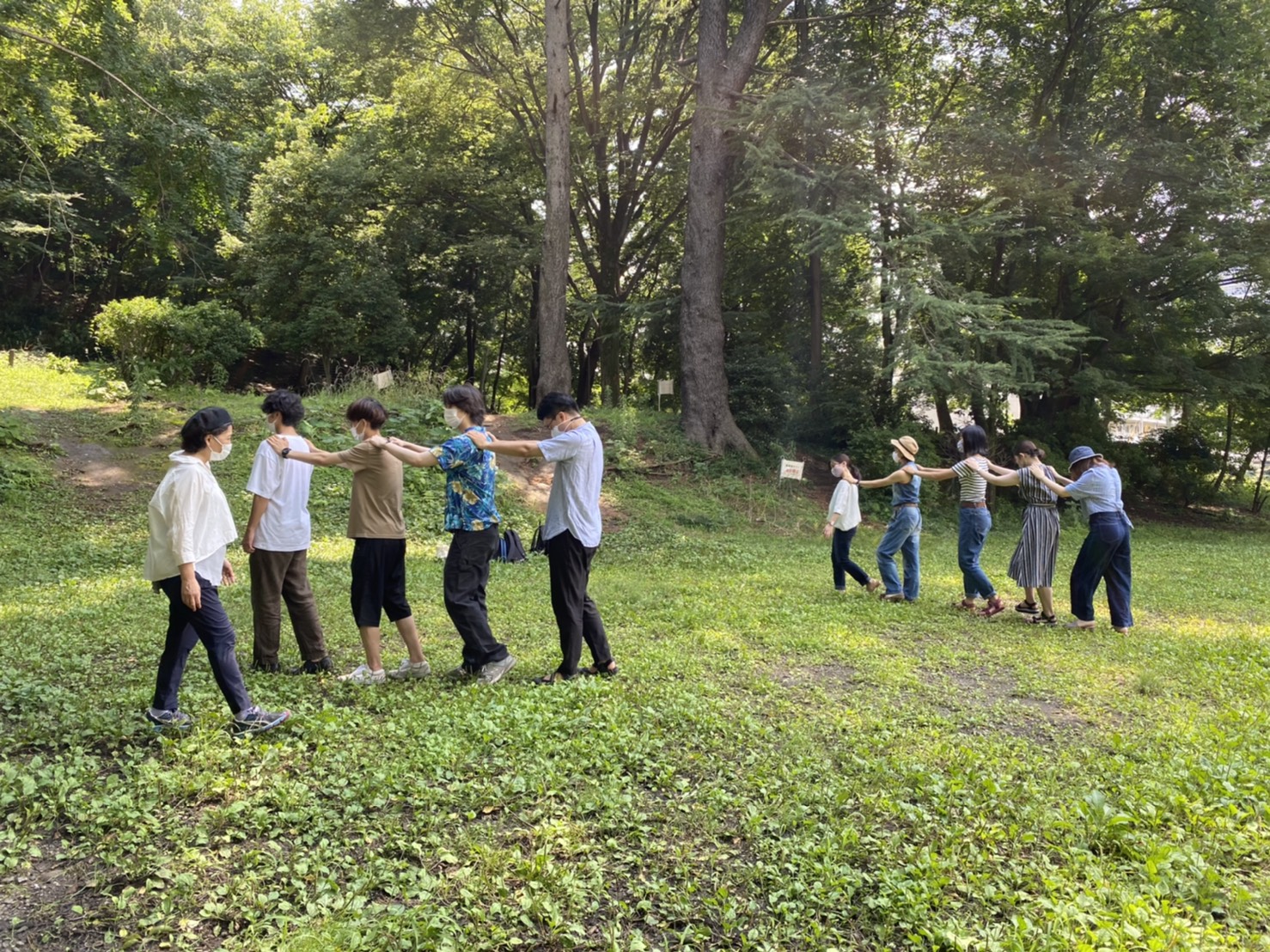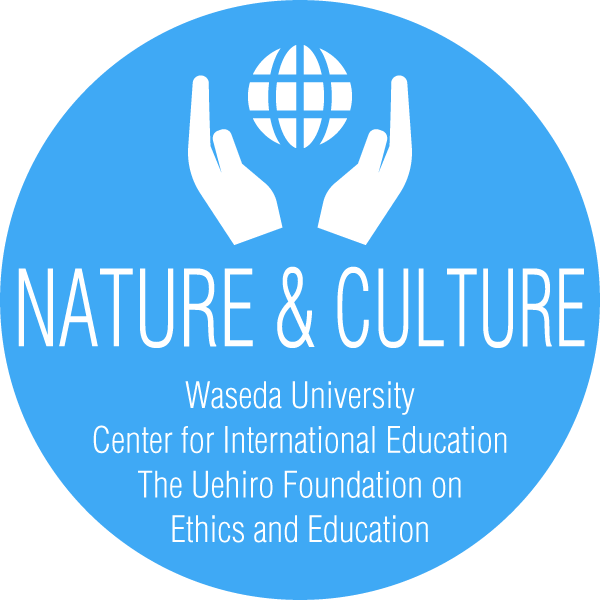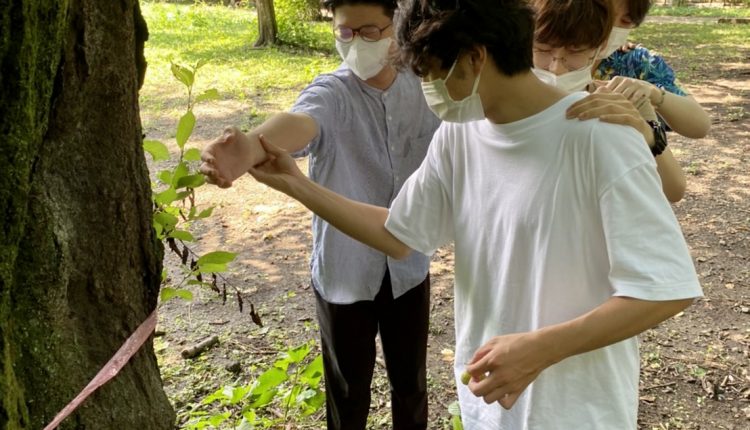Co-living with Nature and Nurturing Kansei through Environmental Education
Final Report 2021 by JeongHoon Lee

Various people work towards taking care of nature in multifaceted ways and areas in society. We had some priceless opportunities throughout this semester to hear from several guest lecturers who work in the frontline across Japan and the world to sustain the environment and make the world a better place.
So how do I want to live in harmony with nature now and in the future? Here is my answer.
I want to play my part through education. Working with children and learning along with them has always been my goal in the future. I want to become an engaging teacher and a lifelong learner by immersing myself in nature with other learners through quality environmental education by providing young learners to connect with nature through hands-on activities, games, and fieldwork and understand themselves.
For a sustainable society, education plays a significant role in shaping children, society, and the future. Education also has its role in the grassroots movement, which is a movement that involves members in the local community to start a local cause or action for change. It builds the foundation before it spreads wider to a national or an international level. Grassroots start from the locals through quality education towards the next generations who will grow up and become involved with shaping the future. I want to propose my vision of a quality education through outdoor environmental learning for children to get out of their classrooms and experience hands-on activities immersed in nature, which will empower their sensibility or Kansei (感性); their connection to nature and personal emotions.
Some educational institutions and programs focus on creating green gardens for kids to nurture the land and their own Kansei. On the other hand, it could be personal, such as playing nature games using blindfolds for team-building purposes like class last week at Toyama Park. Kansei can be explained by how you react through the five senses of see, hear, touch, smell, and taste. It also connects to emotions, whether you express yourself through anger, sadness or happiness, etc. Everyone has Kansei. However, due to the convenient world that we live in today as we tend to take everything for granted, like changing the temperature by pressing buttons, water coming out just by holding out your hand, and even automatic doors where we don’t have to open it by using our fingers and arms, it is said that the opportunities of building Kansei are decreasing. Professor Nukina, who has worked towards restoring the Chimaki Zasa leaves from Kyoto University, has spoken that without nature, it would become difficult to sustain our cultures produced by people, and even difficult to provide quality education and sustain our Kansei.
When I previously took this course back in 2019 and went on fieldwork in Takahata in Yamagata Prefecture, I was able to absorb the things I saw, touched, heard, smelled, and tasted. Kansei can be nurtured and cultivated by being surrounded by nature. It positively equips individuals to “feel,” think, and respond better: such as improving their academic skills from natural appreciation, unique creativity, and inspirations built from Kansei. Not only schoolwork and academics, but Kansei helps children and even adults and all learners to help them maintain healthy relationships with others and the natural environment around them. Adults have the expectations to become role models towards children, and they can do so by providing quality green education by having them experience nature and farming activities.

A cultural example that I want to raise is the native Hawaiian saying: Mālama ʻĀina. Mālama ʻĀina means to take care and nurture the land with love so that the ʻāina (land) will return all the things we need to live and sustain for all future generations. It is from the native Hawaiian language (ʻŌlelo Hawaiʻi) of a spiritual and physical relationship and the bond between us and nature or the ʻāina (land). For native Hawaiians, sustainability is part of their lifestyle. Natural resources in Hawai’i are produced with the sole purpose of using them responsibly and preserve them for future generations for a sustainable future. This traditional saying and lifestyle continue to be passed onto future generations and implemented in education across institutions, including elementary schools across Hawai’i, such as organizing fieldwork activities like volunteer beach cleanup at the local beaches. Mālama ʻĀina reminds us that maintaining a healthy relationship with others is essential to survive in society. But above human relationships, we should not forget the importance of co-living in harmony with nature.
Professor Kumagai, a specialist in Buddhist philosophy in Bhutan, has shared that Bhutan is a country that works to preserve nature by tackling current issues such as animal protection, deforestation, and urbanization as a lifestyle. Happiness in Bhutan signifies when all living things are unconditionally treated respectfully and taken care of like families. Behind these actions lies the Buddhist belief that other living things could become reborn as human beings in the next life. Prof. Kumagai has challenged us to embrace nature as our friend and question how each one of us could feel the voice of nature. We feel the voice of nature in various ways. Perhaps this can be achieved through the cultures, the mindsets, of every individual which education plays a role within it.
As global citizens of society, we also have to be aware that there are people who are not really into nature and environmental issues, as this was me before taking this class two years ago. In my opinion, when we address a possible solution towards an issue, it is worth considering thinking about how we can persuade those who aren’t passionate about nature and environmental issues. It is also worth questioning how we can become allies with them on your side and lead them into considering a life of co-living in harmony with nature. At the end of the day, it’s their choice to decide how they want to live, and it is our choice to decide how we want to co-live in harmony with nature.
I wish we had more opportunities to discuss with each other in class. Although it was unfortunate that we couldn’t go to the Kyoto fieldwork, I’m confident to say that this entire class period was the fieldwork that nurtured my Kansei in various ways. Fieldwork in a way by listening to our wonderful professors and guest lecturers from online and in-person and most of all, discussing, devising, and engaging with our peers who are all interested in sustaining the environment in various ways, especially the last two weeks! I appreciate all the great discussions with you all in this class. Thank you all, and I hope we can go on a fieldwork sometime soon!

